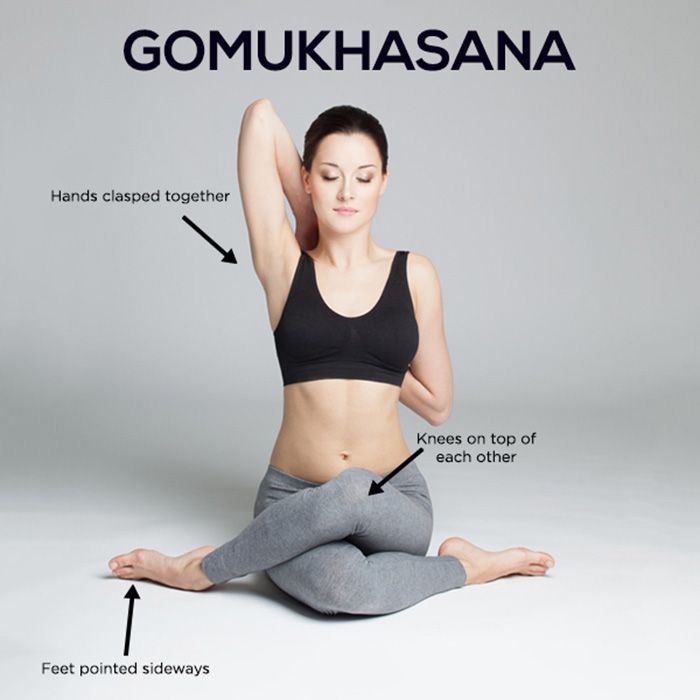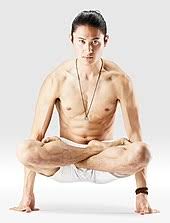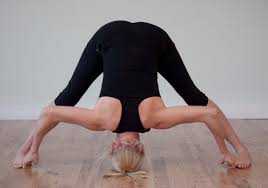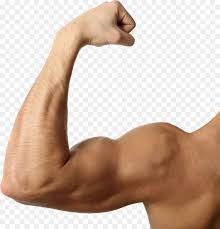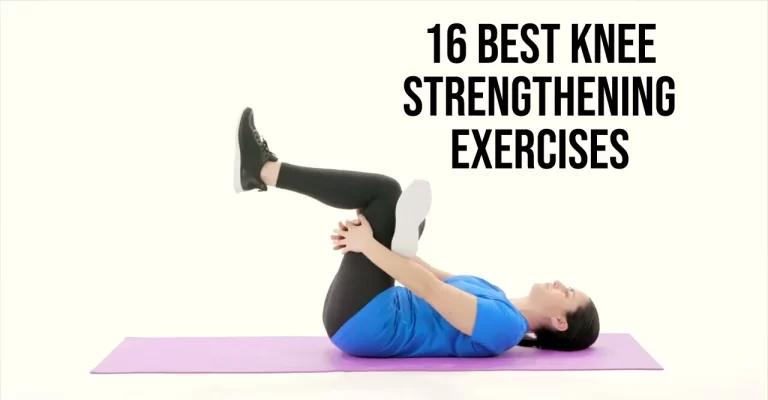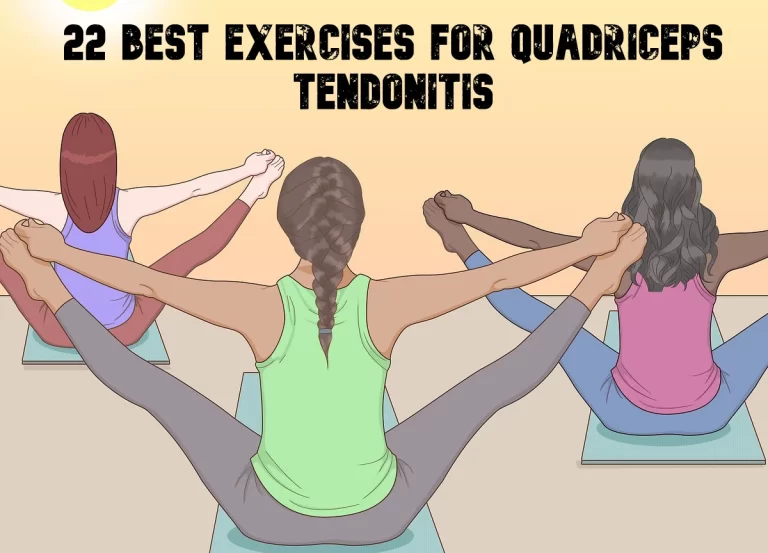Gomukhasana
Gomukhasana:
Gomukhasana is a seated yoga posture that stretches several parts of the body simultaneously, including the ankles, hips, thighs, shoulders, underarms, triceps, and chest. The name comes from the Sanskrit go, meaning “cow,” mukha, meaning “face,” and asana, meaning “pose.”
Table of Contents
How to do Gomukhasana?
Steps:
Begin by sitting in a cross-leg seated posture.
Bring your right foot on top of the left thigh and slide it as close to the left hip as possible.
Bring your left ankle by the side of the right hip. Try to make sure that one knee is over the other.
Slide both your feet far behind, but make sure you are comfortable.
Try to keep the spine straight and vertical and the head facing forward.
Raise your right arm and bring it over your shoulder.
Wrap your left arm behind the back and reach to grasp your left hand with the right hand behind the back, clasping the fingers together.
Stay in the final pose for about 10-12 breaths.
Release the hands and stretch the legs straight, bounce the knees a few times.
Repeat the asana using the opposite limbs.
Finally release the post and relax in a comfortable cross-legged sitting posture.
Gomukhasana yoga Video:
Stretches:
Thorax, Thigh, Hip, Ankle, Shoulder, Triceps brachii muscle, Axilla.
Pose type:
Seated, Hip opener.
Health Benefits of Gomukhasana:
It stretches your hips.
It provides power to your ankles, thighs, shoulders, armpit, chest, deltoid and triceps.
Relieves chronic knee pain.
Strengthens your spine and abdominal muscles.
Helps decompress the low spine (during folded variation).
Strengthens the hip joint.
Benefits of Gomukhasana:
This asana induces a deep state of relaxation.
Brings peace of mind serenity, and concentration.
Helps in relieving the stress and the tendencies of the anxiety.
Good for improving the strength and flexibility of the shoulder joints through the actions of deltoids and rotator cuffs. This helps prevent drooping and frozen shoulders.
Strengthens the spinal column and relieves the back and neck pain.
Expansion of the chest enhances the lung capacity.
Stimulates the peristalsis and relieves the digestive disorders.
Promotes the range of motion of the hip joints and the flexibility of the muscles in the pelvic girdle.
Promotes the health of the reproductive organs.
Brings good postural health.
Contraindications of Gomukhasana:
If you have sciatica, the use of a prop under the hips or folding forward could aggravate the condition.
Avoid the pose if you have serious neck or shoulder problems
If pregnant, do not fold forward during the first trimester
Do not practice if you have serious knee problems.
Precautions of Gomukhasana:
Don’t attempt this Asana in case of Neck, knee, hip, or shoulder injury.
Don’t fasten your hands behind the back. Don’t go beyond your abilities.
FAQ
The hip-opening pose known as Gomukhasana stretches the ankles, knees, shoulders, and arms. Yes, it is. Cow-face yoga is another name for hatha yoga. For those who are slouching and have bad posture from a long work week, this is one of the best poses.
Successfully Manages Sciatica
The pain that starts along your sciatic nerve, which runs from the back of your pelvis down the back of your thigh, is known as sciatica, sometimes known as lumbar radiculopathy. Gomukhasana yoga lengthens and stretches the spine, which helps reduce and, in certain situations, entirely eliminate this pain.
With your palm pointing outward, sweep your arm behind your back and place it between your shoulder blades. Raise your left arm, palm still facing front, fingertips pointing up toward the ceiling. Reach down with your right elbow bent, and if your fingers reach, connect them together.
You should not perform Gomukhasana if you have:
1. Avoid this posture at all costs if you have shoulder pain or injuries.
2. Stay away if you have problems with injured muscles or ligaments.
3. Avoid adopting this position if you have bleeding piles because it could make the issue worse.
Gomukhasana strengthens and improves general posture by stretching the muscles in the ankles, knees, chest, and shoulders. During the asana, almost every joint in the body is moving, which improves blood flow and makes sure the body gets more blood and nutrients.
Improved flexibility, less back pain, better respiratory health, increased circulation, mental calmness, and correction of postural imbalances are all benefits of Gomukhasana. It enhances mental and physical health by encouraging attentive breathing, deep stretches, and focused meditation.

